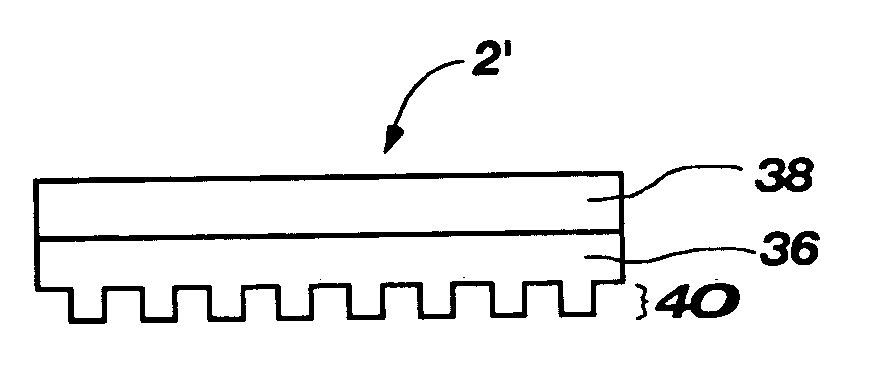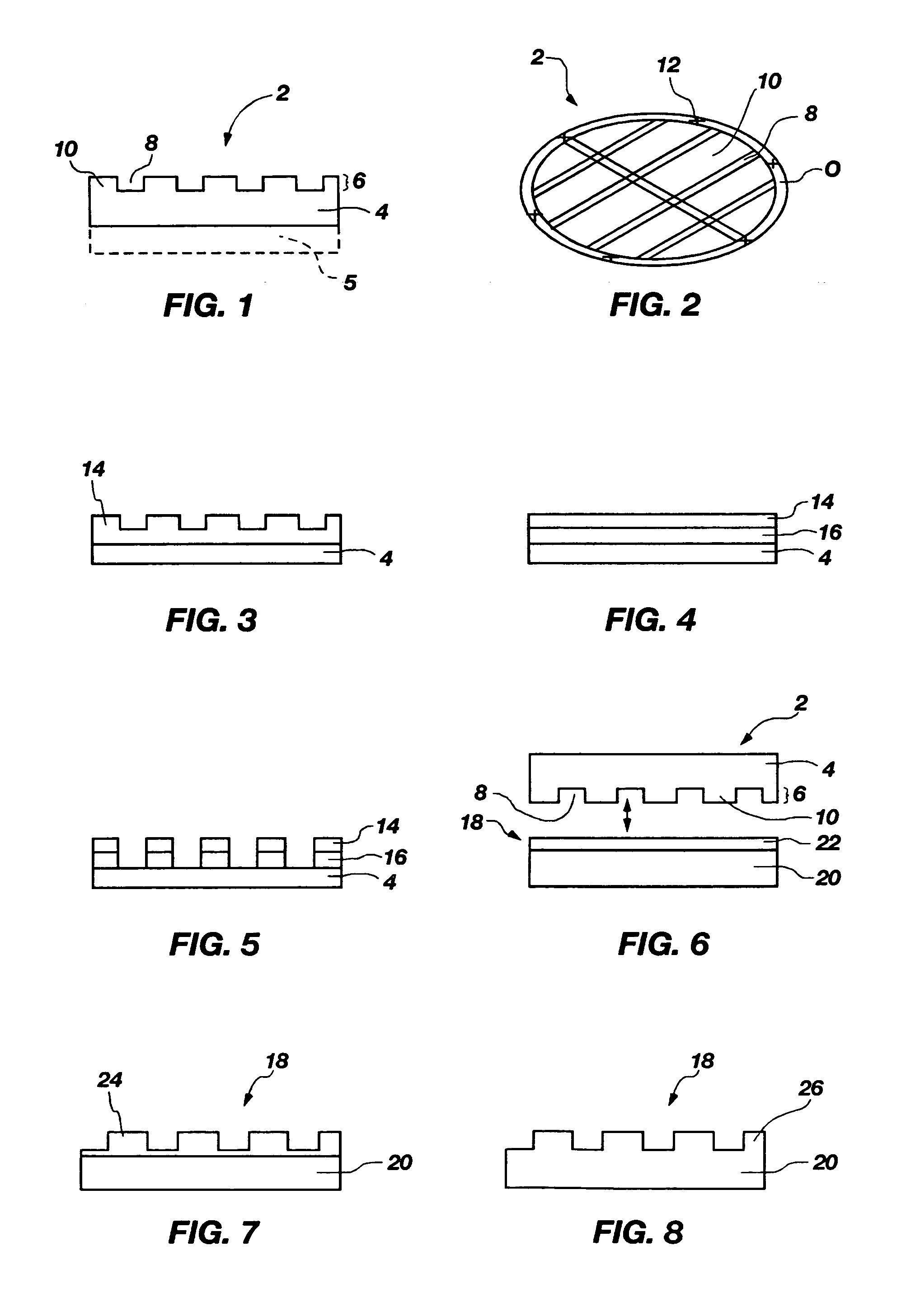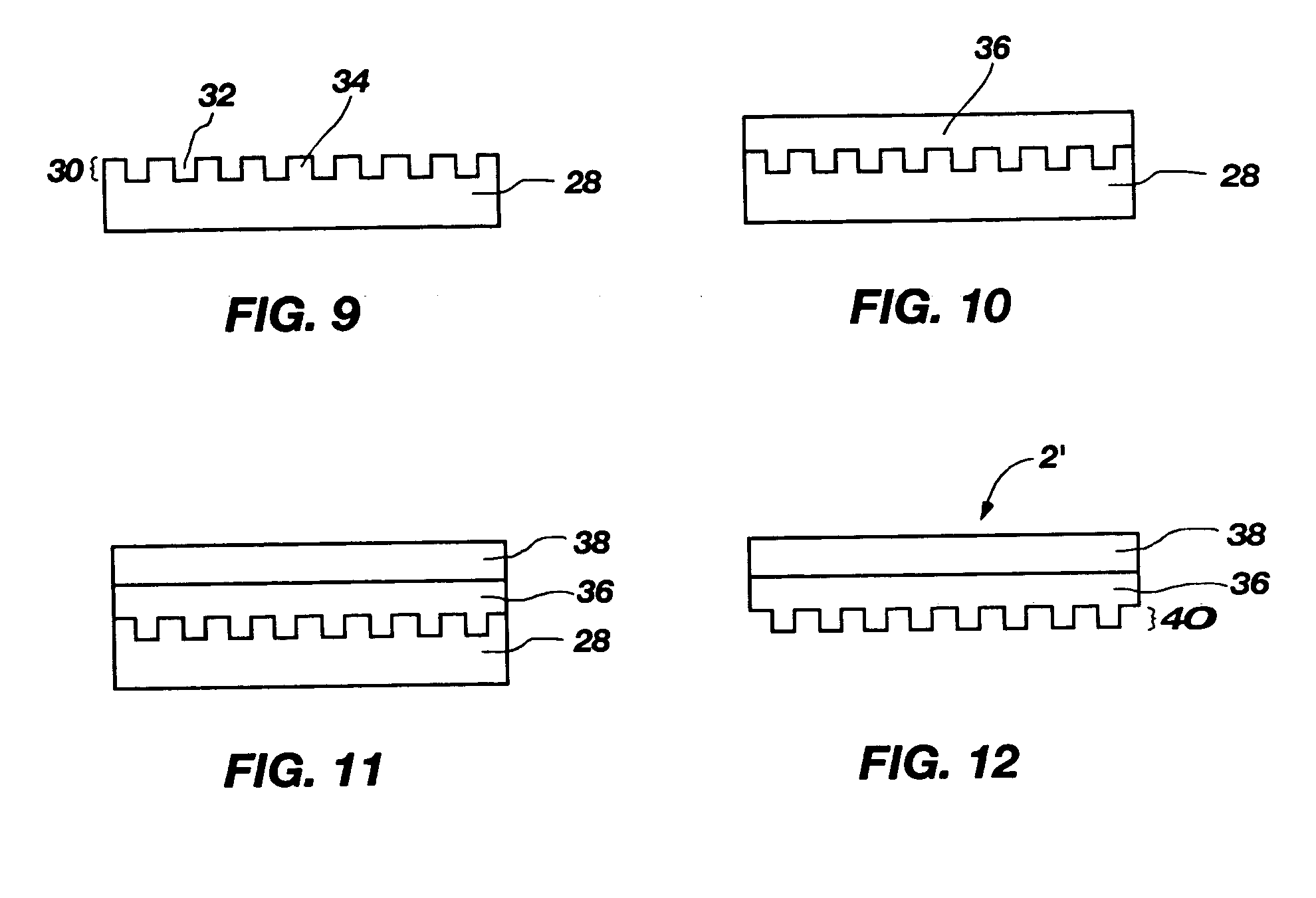Methods of making templates for use in imprint lithography and related structures
a technology of imprint lithography and template, applied in the field of making templates for use in imprint lithography and related structures, can solve the problems of limited resolution of conventional photolithography, high cost of photolithographic equipment, and slow processing speed
- Summary
- Abstract
- Description
- Claims
- Application Information
AI Technical Summary
Benefits of technology
Problems solved by technology
Method used
Image
Examples
Embodiment Construction
[0019] A template for use in imprint lithography is disclosed. The template includes a high resolution pattern that may be formed by lithography. The pattern on the template provides topography that is used to imprint a pattern of corresponding features on a semiconductor device. In other words, the template functions as a mold or form to transfer the pattern to the semiconductor device, forming the features on a surface thereof contacted by the template. As described in more detail below, the template may be transparent to UV wavelength radiation or may be opaque to UV wavelength radiation. The features on the semiconductor device may have dimensions substantially similar to dimensions of the pattern on the template. The features may have a feature size or dimension of less than approximately 100 nm, such as less than approximately 45 nm. By using photolithographic techniques to form the pattern, the template may be easily and cheaply fabricated. In addition, new infrastructure and...
PUM
| Property | Measurement | Unit |
|---|---|---|
| Nanoscale particle size | aaaaa | aaaaa |
| Nanoscale particle size | aaaaa | aaaaa |
| Wavelength | aaaaa | aaaaa |
Abstract
Description
Claims
Application Information
 Login to View More
Login to View More - R&D
- Intellectual Property
- Life Sciences
- Materials
- Tech Scout
- Unparalleled Data Quality
- Higher Quality Content
- 60% Fewer Hallucinations
Browse by: Latest US Patents, China's latest patents, Technical Efficacy Thesaurus, Application Domain, Technology Topic, Popular Technical Reports.
© 2025 PatSnap. All rights reserved.Legal|Privacy policy|Modern Slavery Act Transparency Statement|Sitemap|About US| Contact US: help@patsnap.com



